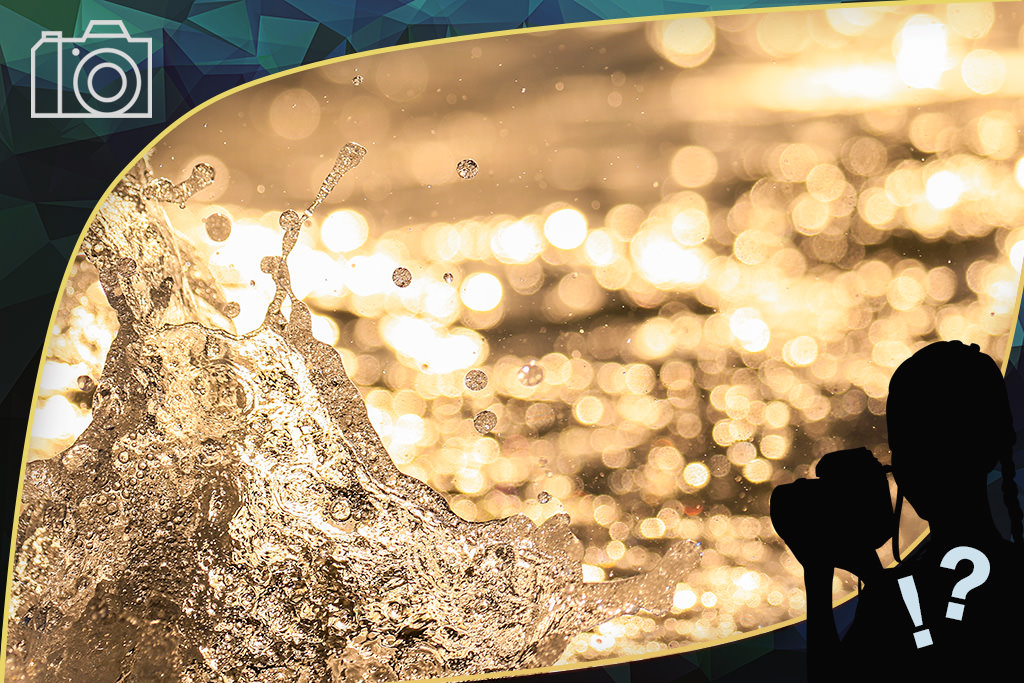Camera FAQ #17: Step-by-step Guide to Capturing Splashing Waves at Fast Shutter Speed Settings
To capture a photo of waves frozen in action, you would normally use Shutter-priority AE to adjust the shutter speed. But not always! Here are some tips that make use of both a telephoto lens and a fast shutter speed to capture shots in which the splashing waves stand out with clarity and dimensionality. (Reported by: Minefuyu Yamashita)

EOS 7D Mark II/ EF100-400mm f/4.5-5.6L IS II USM / FL: 234mm (374mm equivalent)/ Aperture-priority AE (f/5, 1/8,000 sec, EV±0)/ ISO 200/ WB: Shade
I wanted to capture the beautiful form and sparkle of the waves at the moment of breaking. Hence, I aimed from a low position about 1.5 to 2m away, and used a fast shutter speed to catch the moment when the waves leapt up into my screen, and capture them against a background filled with bokeh circles.
STEP 1: Use maximum aperture and a fast shutter speed to capture the waves against a background of bokeh circles
A good way to capture the waves with the "frozen in action" effect is to use Shutter-priority AE mode, which allows you to adjust the shutter speed while your camera automatically adjusts the f-value, to depict the image you are after. One of the principles of shutter speed is that a fast shutter speed helps to freeze action. However, for this shoot, I was also aiming to make the form of the wave splash stand out against the background of beautiful bokeh circles. Therefore,I used Aperture-priority mode, selected f/5 (the smallest f-value I could select in the mode), and shot using the auto-selected shutter speed of 1/8,000 second.
As a rule of thumb, a shutter speed of around 1/2000 second should be sufficient in most situations to freeze the spray of waves. However, in a situation such as this where I was shooting up close with a telephoto lens, fine blurring tends to occur at such speeds, so an even faster shutter speed worked better to perfectly capture the wave frozen in mid-air.
Different subjects require different shutter speeds to freeze them in action. For some more reference shutter speed settings, check out this article:
Adjusting Shutter Speed for a More Dynamic Effect

Fail: Taken using 1/4,000 second
I took this shot using a 25mm-equivalent focal length and shutter speed of 1/4,000 second. When using a wide-angle lens, it is not necessary to use shutter speeds as fast as those needed in scenes where you are using a telephoto lens to make your subject appear larger. With this wide-angle lens, I was able to take a photo that allows you to feel the sense of exhilaration of a sandy beach, but was unable to create the bokeh circles characteristic of a telephoto lens.
STEP 2: Use a telephoto lens to create bokeh circles from the sparkle of the waves
I used a telephoto lens because it has a narrower angle of view than wide-angle and standard lenses, and when used in combination with maximum aperture, it is easier to depict the sparkle of the waves as large, beautiful bokeh circles. These two points mean that it is easier to fill the background with bokeh circles. A focal length of 374mm was necessary to 1. Create soft bokeh circles from the waves captured close up, 2. Depict the wave splash in elaborate detail, and at the same time 3. Ensure that it stands out from the bokeh circle background. Here, I used a EF100-400mm f/4.5-5.6L IS II USM lens.
For more tips on how to capture bokeh circles, check out this article:
4 Easy Steps to Capture Those Elusive Bokeh Circles
STEP 3: Take shots in backlight to capture the sparkle of the waves
I used backlight in my shoot to bring out the sparkle of the waves. By taking the photo from a position directly facing the sun, the light shone through the water, which brought out the detail in the wave splashes. However, if I placed the sun in the frame, it would overpower my main subject, i.e. the waves, so I chose a time of day when the sun was not too low in the sky, and composed my shots to include only the surface of the sea in the background.
STEP 4: Shoot from a low position
Aim at waves at a distance of about 1.5 to 2 metres from the seaside. I took shots while lying down on a sloping rocky area to get close to the ground.

Receive the latest updates on photography news, tips and tricks by signing up with us!
About the Author
A monthly magazine that believes that enjoyment of photography will increase the more one learns about camera functions. It delivers news on the latest cameras and features and regularly introduces various photography techniques.
Published by Impress Corporation
Born in 1979 in Aichi. After gaining experience in jobs such as interior and graphic designing, Yamashita became an independent photographer in 2011. His works have been used in many calendars.


































